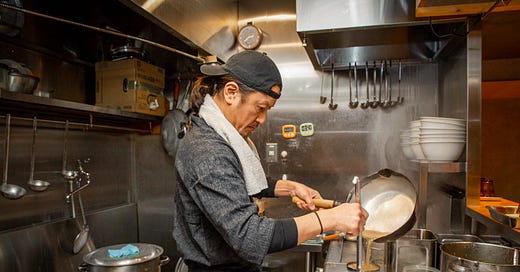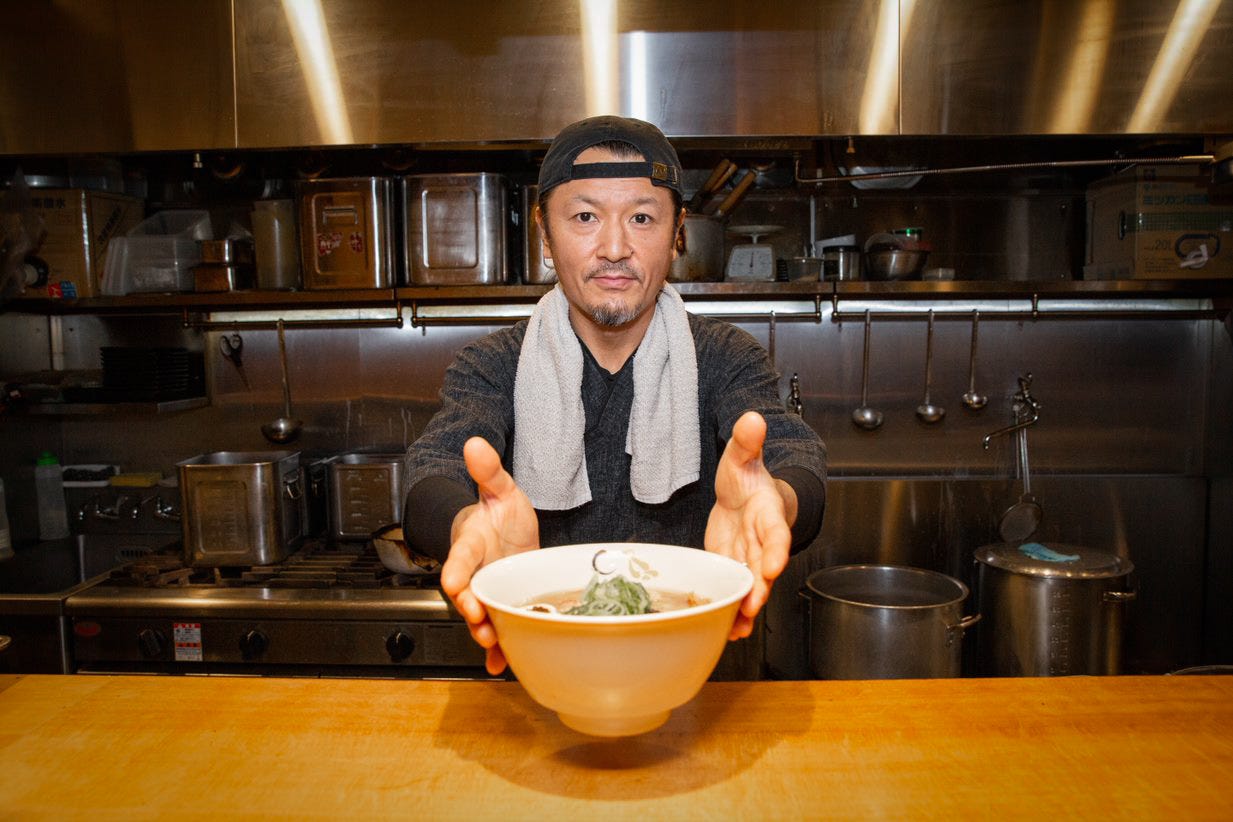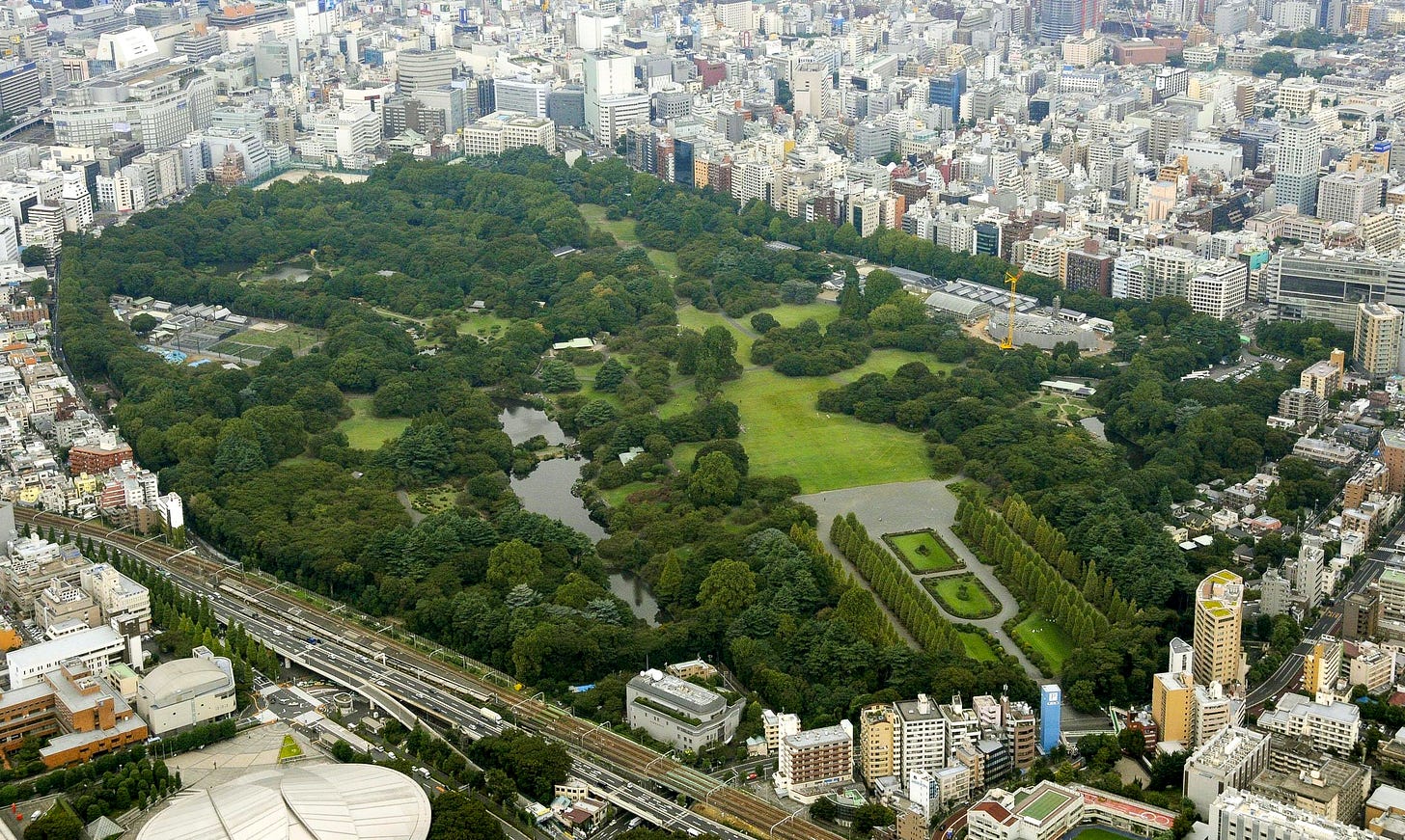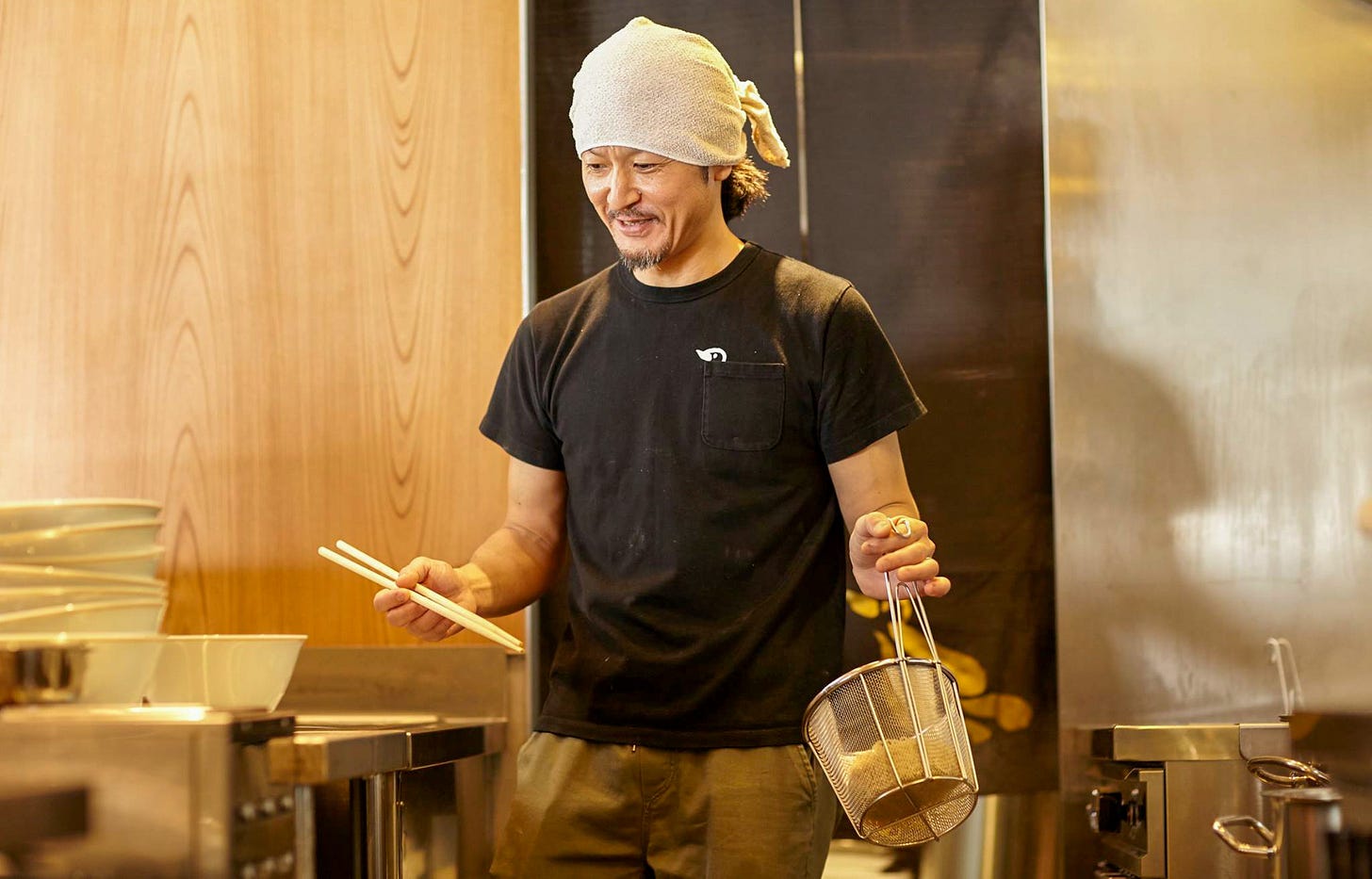A Meeting with Ramen Master Yamamoto
One of just two ramen chefs to hold a Michelin star, he was among the early innovators to expand ramen's dimensions — using a delicate breed of Japanese clam.
► This week’s Ramen Beast newsletter takes you inside one of Tokyo’s most acclaimed ramen kitchens…

Atsushi Yamamoto is one of Japan's most ambitious ramen chefs. He is one of only two Japanese ramen masters currently in possession of a Michelin star and he has spent the past several years tirelessly promoting ramen culture globally by launching over a dozen shops around the world.
Yamamoto-san did his ramen training at the old school ramen mecca Eifukucho Taishoken, before going solo in 2006 by founding Soba House Konjiki Hototogisu, a tiny, eight-seat shop on a narrow back alley of Tokyo's Hatagaya neighborhood. At Konjiki Hototogisu, Yamamoto-san was among the first wave of ramen masters that attempted to elevate the dish above its humble origins by introducing high-end ingredients and sophisticated cooking techniques. His efforts weren't initially welcomed, however.
Yamamoto-san's most recognizable signature is his use of delicate Hamaguri clams as the main component of his soup. This richly oceanic concoction is then mixed with a sea bream soup and another soup made from dried gyokai (other sea ingredients), creating a complexly layered triple-blend. He also experimented with various cuts of high-quality Japanese pork, cooked sous vide style, as his chashu toppings. Extravagances such as porcini mushroom duxelles sauce, golden inca berry sauce, white truffle oil and pancetta bacon bits eventually worked their way into his bowls too. Many of these flavor profiles and techniques had never been employed in the ramen kitchen before — and he continues to constantly change things up.
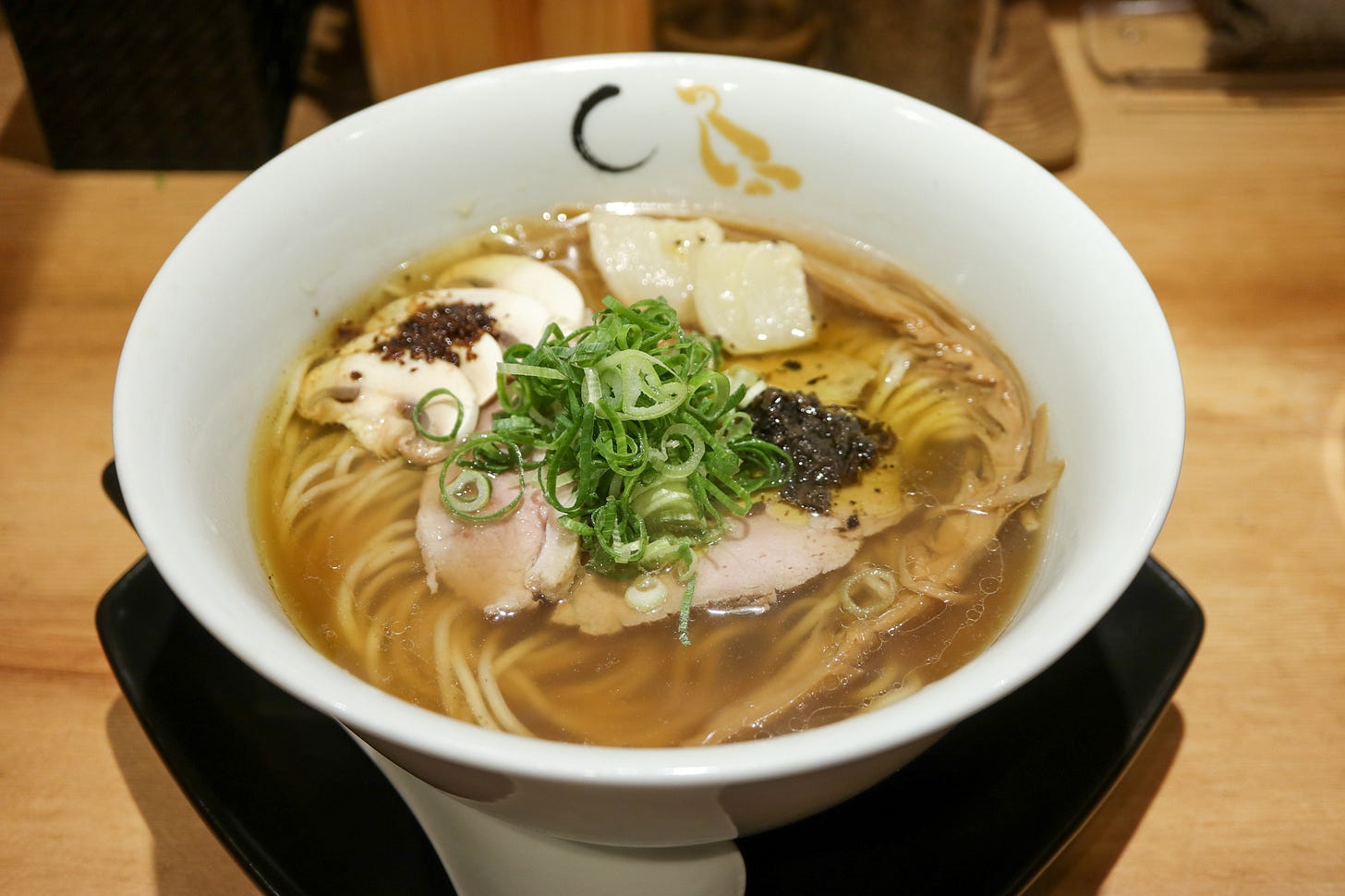
Today, triple soups, immaculately prepared toppings, and premium ingredients from Western cooking are common throughout Japan's ramen world; but back in 2006, such innovations tended to baffle the everyday ramen eater.
"In those early days, I only managed to sell five bowls of ramen daily," Yamamoto-san remembers. "I had to throw away the soup and ingredients in despair every day. I was on the verge of bankruptcy, so I had to sell some items in my house in order to keep the business afloat. I would sleep in the shop and totally immersed myself in perfecting my ramen."
It wasn't too long before Japan's discerning food community caught up with him. In the early days, his shop was considered a hidden gem, but within five years, Konjiki Hototogisu was attracting steady lines of ramen heads on the weekends. In 2015, he earned international notice when he was among an early batch of ramen chefs to be included in the Michelin Guide, earning a Bib Gourmand. Three years later came the Michelin star. In the time since, Yamamoto-san has channeled his energy into evangelizing for high-quality, authentic Japanese ramen overseas. He opened his first foreign shop in Toronto in 2018, and has since expanded his empire with three shops in Canada, two in Hong Kong and eight in Singapore.
Samurai-like and utterly no-bullshit in bearing, Yamamoto-san is an old school Japanese boss who makes new school Japanese ramen. The Ramen Beast team recently paid him a visit to discuss his ramen journey. (Interview below)
If you’re new here, this is the Ramen Beast Newsletter — stories and expert guides to Japan’s vast ramen subculture. Subscribe, share or shoot us an email with your ramen queries.
Ramen Beast: What pulled you into the ramen world?
My love of ramen! We Japanese people all love ramen. I started my working life as a craftsman on construction sites, but as I was preparing to get married, I thought this industry might become more difficult as I aged, so I thought seriously about what I wanted to do in the future. I realized what I wanted most was my own ramen shop, so I chose this profession and committed to it fully. I was 26 years old then, and there would be no going back.
Why did you choose to do your training at Eifukucho Taishoken?
I chose Eifukucho Taishoken simply because it was my favorite shop. At my previous job in the construction world, I was able to travel around Japan and eat at a variety of different shops. In the end, Eifukucho Taishoken was still the one I was drawn to the most, so I decided to apply and start my training there.
Is it still your favorite?
Well, I can't really compare it to contemporary ramen, but it remains a special place for ramen history.
What are your memories of Taishoken? It's known to be a pretty traditional place...
The most straining part about working there was the way that it broke down my spirit. The shop itself is incredibly popular and busy, but on top of that you have to be aware of the senpai-kohai relationship and showing respect to the elders at the shop. It wasn’t like I was bullied, but it really did wear me down. The shop never closes and as a regular employee, you’re allowed just three days off per month. But even on my days off, I still felt I should go to the shop for 3-4 hours to help the staff and practice things like straining noodles. Combine that with constantly getting scolded and told off, just as a matter of principle from my senpai, and it all just really drained my spirit. That was definitely the roughest part. But I put in my four and a half years of training there.
When you eventually decided to venture out on your own, how did you go about devising your menu? How did you develop your own style?
When I began at Eifukucho Taishoken, I expected that I would model my ramen after their bowls whenever I eventually started my own store. But after about a year, as I began to understand different ingredients and develop my own palette, I realized I wanted to create an original ramen of my own. From there, I went about making a study of different ingredients, tasting lots of things and developing my flavors over time. It was persistent study. When I eventually launched my own shop, I barely had any customers at first — maybe five on a good day. It was really hard to win customers' appreciation for my ramen, since it was so new then. Of course, the flavors back then and the flavors today are different. I think it was good back then too, but I have continually changed the recipe to make incremental changes for the better. It's never finished.
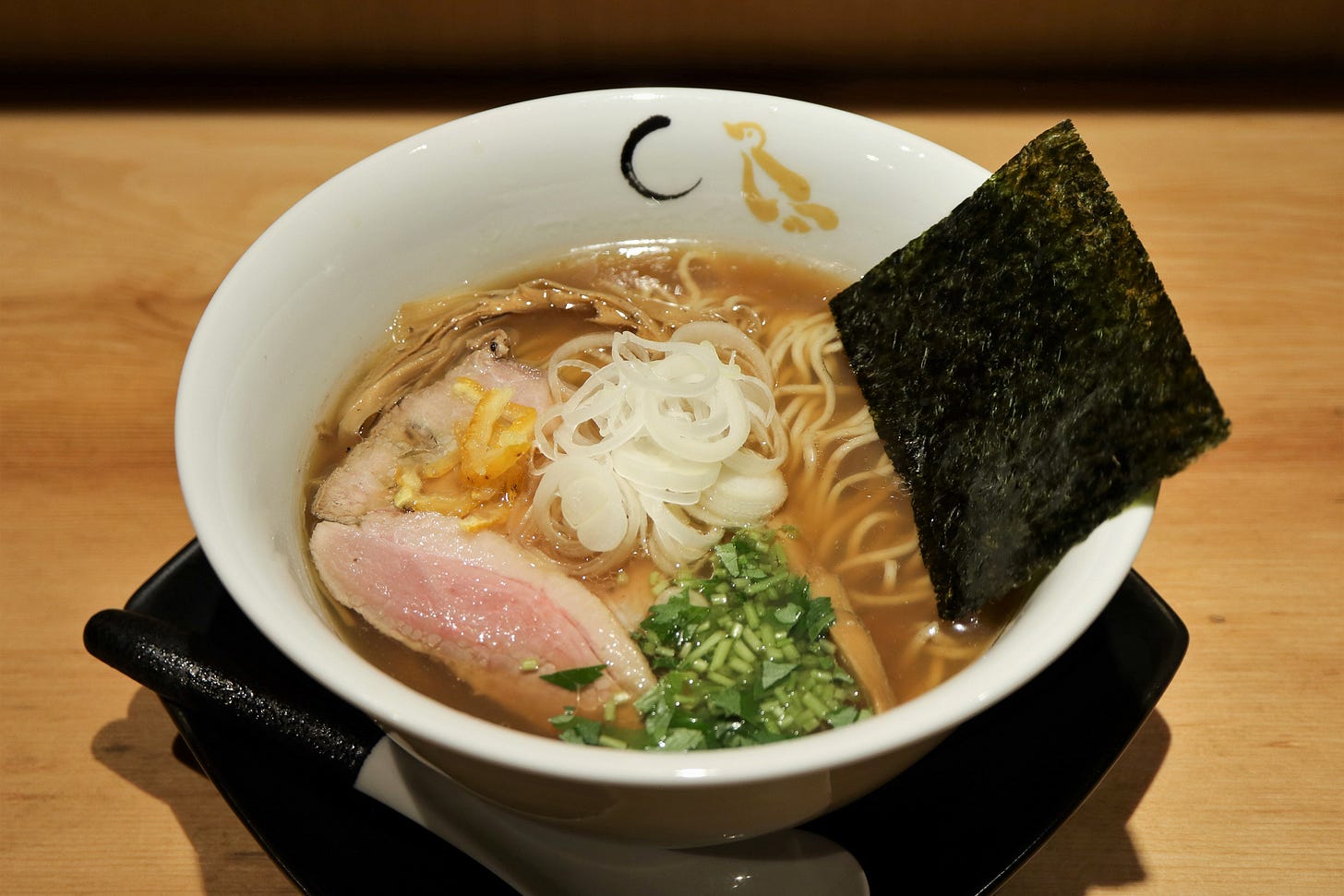
You made waves by using Hamaguri clams in your ramen, which was very innovative at the time. How did you come up with that?
Honestly, because I just love Hamaguri. But Hamaguri clams are so expensive. It was considered impossible to use Hamaguri in ramen because of the price point. So I thought of using manilla clams, which are more affordable; but no one was using Hamaguri at the time so I got intrigued. How can I do it? I wanted to be the very first to make ramen out of it. In the beginning, I experimented with basket clams, shrimp, crabs — anything that wasn’t regularly used by ramen shops at the time. But I had to make something that struck me personally as original and really delicious, and in the end I settled on Hamaguri.
And how about sous vide and the other modern cooking techniques you brought into the ramen kitchen?
Well of course, the sous vide cooking method is widely used in the ramen industry now, but more than anything, sous vide chashu tastes better than the braised ones in my opinion. It's the same with making a refined soup: When you take great care to ensure the temperature is consistent, you end up with a better product. And of course, I think the sous vide chashu tastes better overall with a delicate soup like ours. It maintains its moisture better.
You were also among the first to use truffle oil in ramen.
My inspiration for the truffle was definitely Western cuisine. At the time, a lot of shops were taking inspiration from other Japanese cuisines. If I were to do that, I would have been like everybody else — and I wanted a bit of originality. So I ate at numerous high-end Western restaurants in Tokyo, and whenever I tasted something I thought was interesting, which might have potential for ramen, I took note of it. For instance, I now use truffles, porcini, binka berry sauce, white truffle oil — they're all Western influences — but I thought they added layers and depth to the bowl. They allow me to create an experience where the flavors change throughout the meal for customers — so they have surprises to enjoy until they finish the very last drop of soup. That is why I use them in my ramen.
How do you think ramen culture has changed as chefs have begun using high-end ingredients? And what's your response to those older purists who insist that ramen should remain relatively classic, affordable and simple?
Well, Sano Minoru-san was probably the first person to use high-end ingredients in ramen. He was very influential — many of us ramen chefs became enamored with Sano-san and his approach. He got some backlash in the beginning — people saying he was charging too much, or that his approach was unnecessary for ramen — but after ten years or so, he gained the respect of other chefs and soon many of us wanted to be like him. I'm one of his many followers.
In the beginning of ramen culture, you really didn’t have to do a lot training or anything to make popular and profitable ramen. Back in the day, if you opened a Chinese restaurant in Japan you inevitably got a decent stream of customers coming in — and usually the most profitable menu item was ramen. Of course, it's fairly difficult to make good ramen, but it was usually the most profitable dish on the menu because the ingredients were so cheap despite how delicious it could be. Ramen chefs back then would go to local butcher shops and get free bones that were going to be thrown away. Manufactured noodles were cheap, and of course water was free. So it was easy to open a Yatai and make ramen with a high profit margin. It was working-class food, and people's expectations were for a hot, tasty, filling meal. Working people of all types during Japan's high-growth era.
So, due to differing cultural aspects and social conditions of the time, the ramen of that era and the ramen of today are completely different. In order to make better ramen, eventually it became necessary for someone to start using better ingredients. But doing so required prices to be elevated too, in order to keep the ramen profitable. Sano-san was one of the first to break this barrier — using high-end ingredients, charging a bit more, but also changing and advancing people's perceptions of what ramen could be. I know some people say ramen should stay classic and cheap, but I have no problem with chefs who push the boundaries.
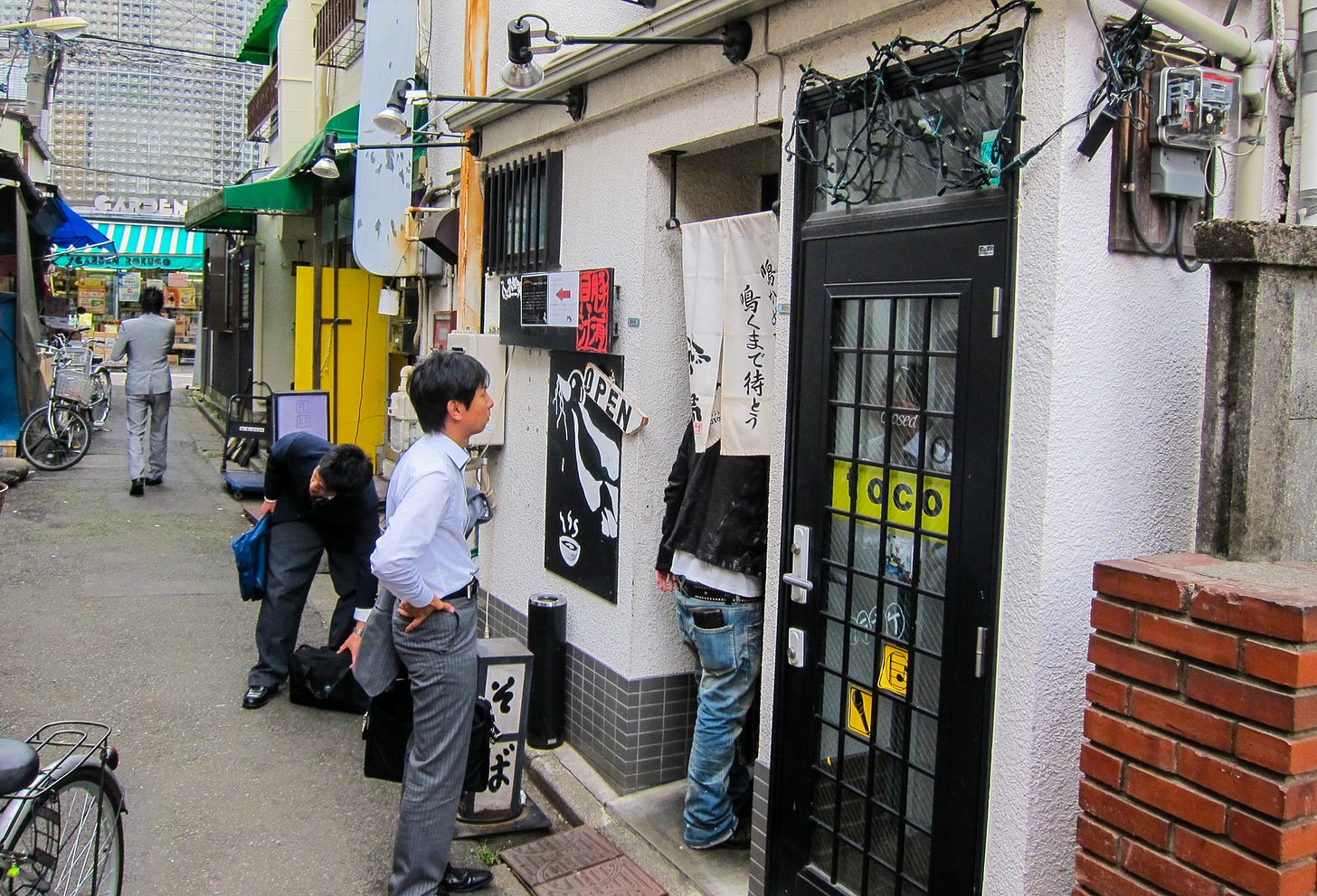
Hototogisu's original back-alley location in Hatagaya was a beloved spot for ramen heads. What lead to your decision to move to your much larger current space in Shinjuku?
I just wanted a bigger space, to be honest. I wanted the space to make my own noodles. In my opinion, you’re not a true ramen shop if you don’t make your own noodles. To be a true ramen master, you have to make everything yourself. I always had this nagging thought that buying noodles from noodle manufacturers delegitimizes me a bit, so I always wanted to do them myself. But I just didn't have the space in my tiny original shop. That said, even when I was getting them made elsewhere, I actually crafted the recipe from zero. I worked with the manufacturer and chose the amount of water, egg, etc. It was 100% me. But I still felt I needed to everything myself eventually.
As for why Shinjuku, I live close to Shinjuku Gyoen, so the move would of course make my commute easier. Also, in Japanese culture, big parks like Shinjuku Gyoen have a spiritual aspect to them, so that played a role. It was a long process, though, to secure that space. I waited about a year and a half for that location. Once it opened up, I put my name in and discussed it with the landlord. And as time went by, other ramen shops that were competing for the space gave up and went elsewhere. It helped that the gas and water wasn’t properly set up at the time to house a ramen shop, so it required some initial investment. Many new ramen shops prefer to take over spaces that were already used for ramen, because it makes the set-up so much cheaper. But all in all, just being in Shinjuku, I thought this was the place for me.
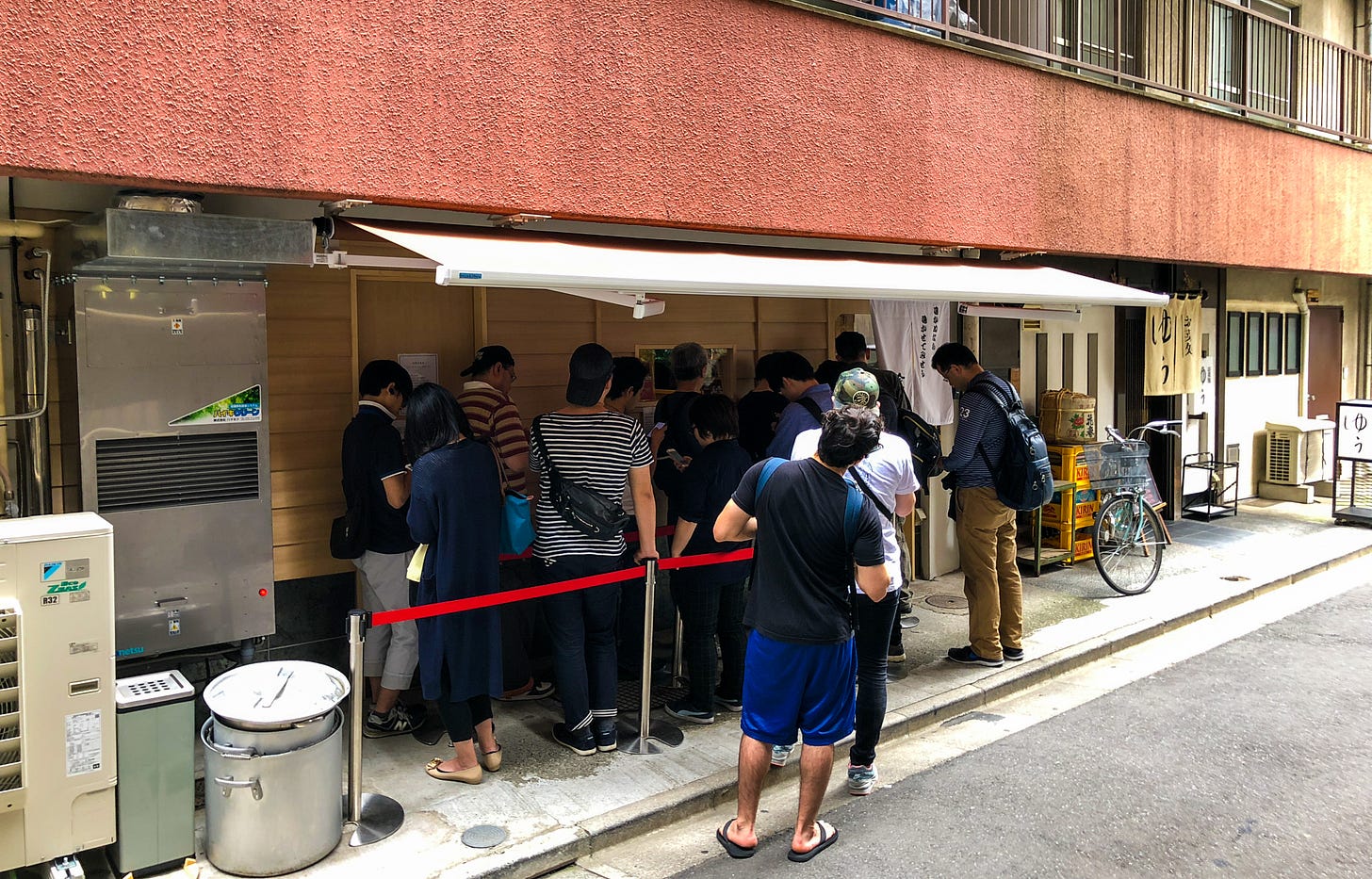
Recently there seem to be a lot of shops in Tokyo that have followed you by using truffle.
Truffles have this image of being really expensive. However, if you use them in sauces as opposed to shaving them over the top, you can cut the cost down to about what a slice of chashu costs. I think more chefs have become aware of that, so more have started using them in their ramen. You still have to think about how it pairs with the other elements of the bowl, though, which is quite difficult to do well. It's a powerful ingredient. You should use it very carefully.
Tell us about your experience of being a Michelin-honored chef. What's it been like for you?
When Michelin first produced a guide for Tokyo in 2008 I decided that I really wanted to be the first ramen shop to get a star. At the time, my ramen wasn’t getting much recognition here in Japan. I wasn’t getting huge lines like other shops. I think my ramen was almost perceived as belonging to a different food category because of the type of ramen I was making. I figured, if I wasn’t going to get recognition here in Japan, I’ll get it from abroad. I thought maybe the flavor profile of my ramen would easier for foreigners to understand. With this in mind, I really hoped to catch Michelin's attention. In 2015, I first entered the Michelin Guide with a Bib Gourmand (Michelin's honorary category for "exceptionally good food at moderate prices," which is considered a step below its star system). But in 2015, there were about 20 or so shops already minted as Bib Gourmand. So it didn’t mean anything too special to me; I wasn’t first or anything, just one of 20 or so shops. I felt that I couldn’t rest until I was number one, so I constantly strived to make my ramen and my shop better. For the Michelin Guide, you actually don’t know whether you have received a star or a Bib Gourmand until you get to the event where they unveil that year's honorees. At the reception, a staff pulls you to the side and tells you what you are being awarded with that year. So, when I got there in 20TK and I was told I had received a star, my mind went blank from happiness. That's how I would describe it.
How has being in that exclusive, and very visible club, changed things for your shop here in Japan?
My foreign clientele really picked up. It took about half a year or so, but I saw a huge increase in the number of foreign customers. I would say about 90% of my customers were suddenly non-Japanese. It was difficult at the time, trying to handle foreign customers since my staff and I don’t speak English. We somehow managed through it and we're at the point we are today because of it. I'm grateful to everyone.
What's your process like when you are launching shops outside Japan? What are the challenges of making ramen overseas?
First, the ingredients abroad are vastly different from the ingredients I can obtain here in Japan. I wouldn’t feasibly be able to bring my ramen from here in Japan to locations abroad because the ingredients would be impossible to get. More so, the flavor palettes of the respective countries are different, so they’re not going to automatically accept my Japanese ramen abroad. So I try to understand the palette and culture of the country I’m opening my shop in. I want to make ramen that caters to their tastes. Otherwise you will lose customers after a few months, once the initial excitement of a Michelin-starred Japanese ramen chef coming to town dies down. That’s why I try to make ramen that's still my style but also unique to the tastes of the respective country.
When I arrive in the country, I inspect and research the local ingredients. From there, I’ll have a basic concept for the type of ramen I want to make. Then I’ll go and eat at all the local restaurants and sample the local cuisine — not the fancy, five-star restaurants, but the spots that local people go to on a regular basis. Once I feel I have an understanding of local tastes, I’ll start making my adjustments to the ramen. I’ll have tastings with local customers, get their take on the ramen and change up the recipe in order to appeal to a wider audience in that respective country — all while raising the quality of their ramen scene along the way.
While the exact flavor profile might be different, I try to bring the concept and environment of Konjiki to all of the locations I open abroad. We do want to remind people that this is a bowl of ramen that was created by a chef from Japan. I can't make you the exact same bowl in your country, but some of the base and the inspiration will be there. And we encourage and welcome you to come to Konjiki here in Shinjuku as soon as you can.
It's not so surprising for many restaurants to suddenly raise their prices once they've received the acclaim and attention that comes with a Michelin star. But you have never done this.
Yeah, it's true that shops and restaurants tend to raise prices once they attain a star. Tsuta and Nakiryu, for instance (Tsuta was the first Japanese ramen shop to receive a Michelin star; Nakiryu currently holds a star along with Konjiki Hototogisu). Of course, over the years, as I've made changes to my menu and used better and better ingredients, I have had to apologize to my customers and raise my prices by 50 yen or so (50 cents). But I’ve always wanted to make a bowl of ramen that costs under 1,000 yen (about $10). It is very difficult to do so, but I would rather live with the stress of maintaining my own margins than face the stress I would feel by disappointing my customers because I have raised my prices. I'd much prefer to see my customers continually coming in happily, even if it means more stress behind the scenes.
How has the pandemic affected your shop in Japan?
COVID-19 is a terrible thing that's nobody’s fault. We just have to struggle through it together. We just have to wait it out until customers are comfortable dining in again. As for Konjiki, we don’t necessarily have to provide take-out service in order to survive. In all honesty, doing so damages our brand a bit. Ramen is not an ideal cuisine for take-out dining; you lose quality very fast. However, we're providing take-out as well as the cook-at-home frozen ramen packs for the customers who want them. And we are still getting quite a few customers coming into the shop and I’m very grateful to them. We all just have to be as safe as we can and power through it.
What are you future ambitions for Konjiki?
All of my ambitions at the moment are for abroad. I want to be the first Japanese ramen chef to open a ramen shop abroad that wins a Michelin star. Plain and simple, this is all I'm focused on at the moment. This is the motivation driving everything I do in my shops these days. It's what's inspiring the many menu variations I'm attempting. At my shops in Singapore, I think we have 20 or so varieties of ramen on the menus. Each bowl is originally made from scratch by me at the shop. Sometimes you might suffer a dip in quality because you're trying to do so much in the shop. But I really want to create something that is loved and respected by the customers of those respective countries. The challenge of obtaining a Michelin star while working in that foreign context is what drives me right now.
As a chef behind the counter, what do you make of the hardcore ramen hunter community — the obsessives like this guy? (points to Abram)
I genuinely think it's great! People like Abram-san are what keeps the ramen industry kicking. It raises the popularity of ramen, and because people who love ramen exist, we chefs exist. Most importantly, the people who are ramen obsessives spread the word of ramen — they understand what we ramen chefs are striving for and they help others to understand. They spread the word about exciting new shops, which can really save a chef when they are first starting out. I think this subculture is really what separates ramen from other cuisines. It’s why ramen is becoming so popular.
Where do you go when you want to eat an inspiring bowl of ramen?
Toy Box or Iida Shōten. The ingredients they obtain for their shops are unparalleled. They continually raise the quality of their ramen, and when it gets to this really high level, you're talking about incremental, millimeter differences in quality. The fact that they continually find ways to up the quality is something I deeply respect.
- Edited by Patrick Brzeski, produced collectively by the Ramen Beast team.

